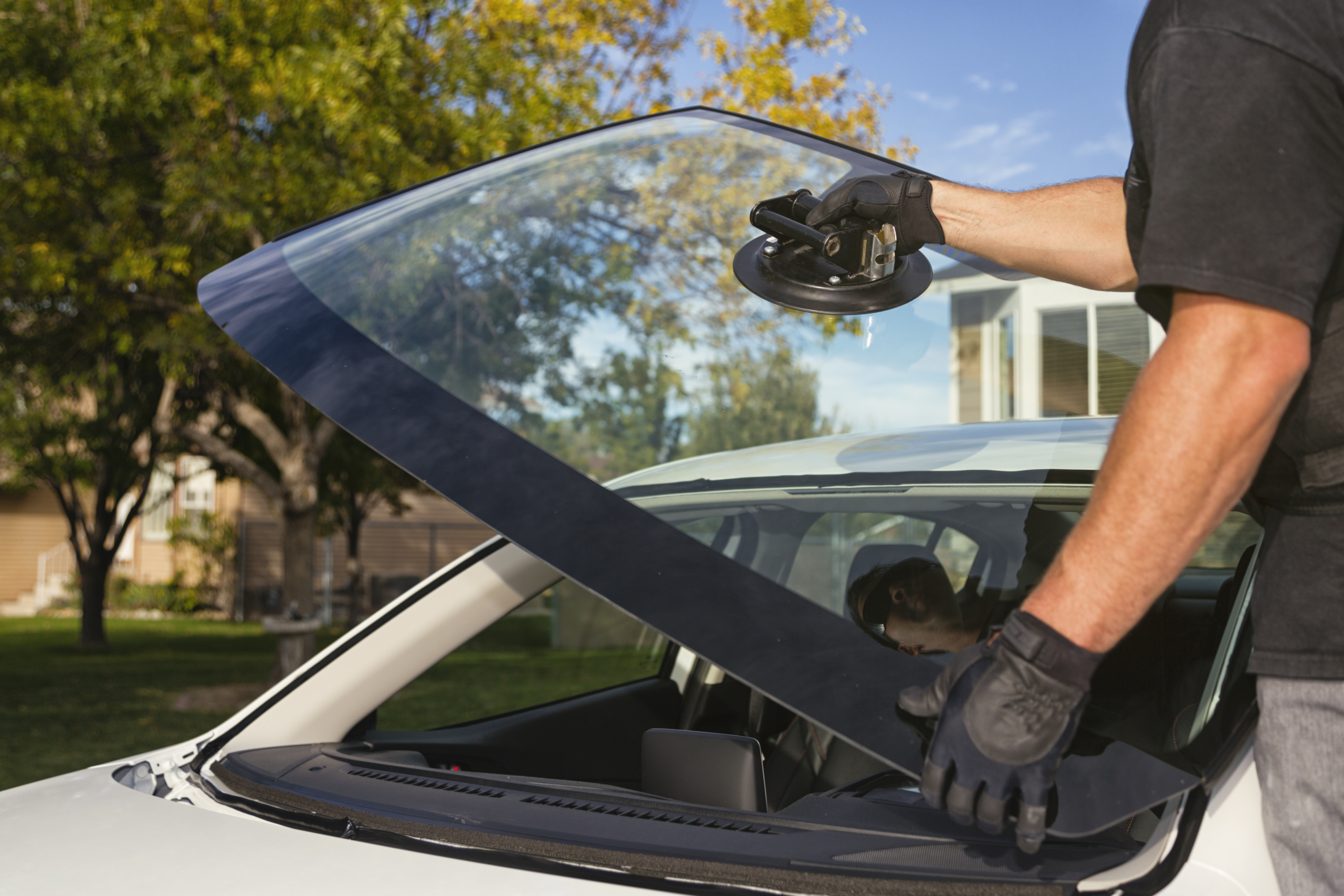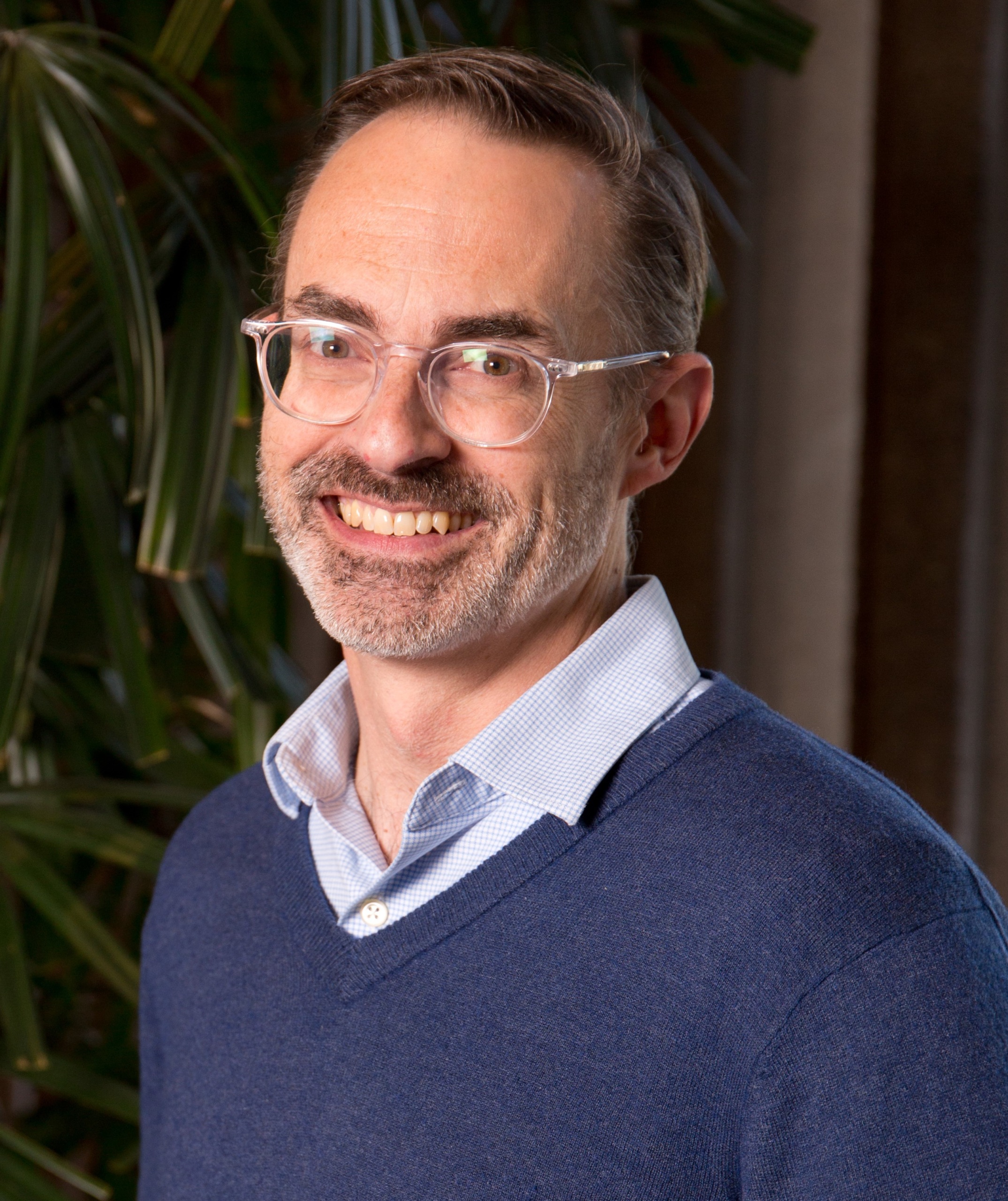
True “Confessions”: Lessons on building dynamic systems from a recovering engineer
Building systems that are designed from the start to be flexible, adaptable and reliant on empowered people can be an effective strategy to build up not only strong towns, but sustainable ones as well.
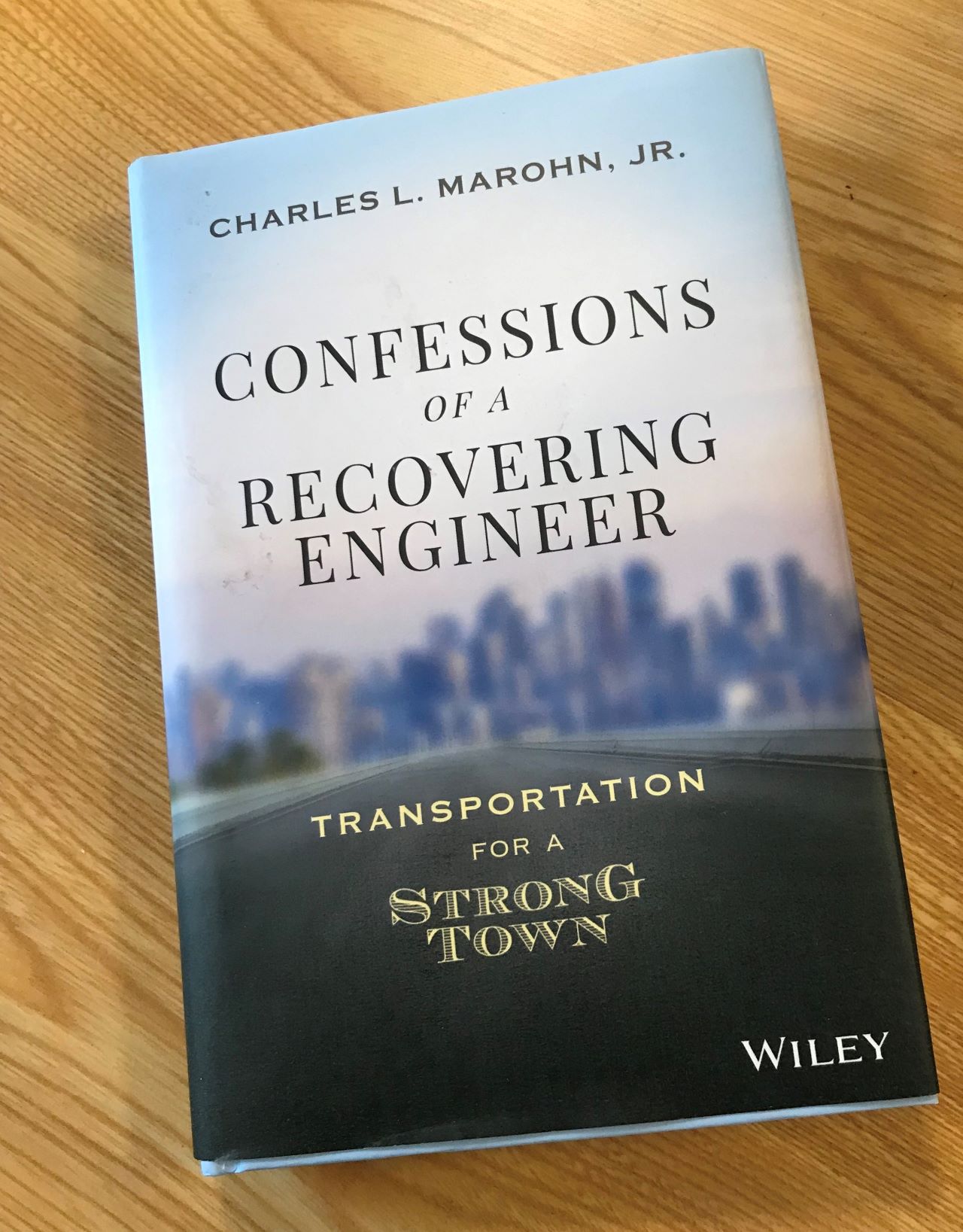
Some things are more than they seem to be.
“Confessions of a Recovering Engineer,” the latest book by Strong Towns founder Charles Marohn, is, to judge from its cover, a book about transportation. It is that, of course, and it’s a good one. Flip through the pages and you’ll see diagrams of intersections, chapters about congestion and traffic flow, and recommendations for reforms.
But the thing that has intrigued me most about Strong Towns since I first learned of the organization a decade ago is not its policy prescriptions, but rather its unique approach to the issues about which the organization is concerned. In a polarized era, Strong Towns is aggressively non-partisan. Strong Towns is endlessly curious, empirically based yet morally aware, and willing to ask the *really* hard questions that lurk behind the superficially hard questions of our policy debates.
“Confessions” is chock full of these deeper questions and insights. What do we value in transportation and how are those values encoded in the language we use in policy conversations? Which decisions are properly the public’s to make and which are the province of technical experts? Is a city fundamentally a machine or a habitat? Who bears what share of moral responsibility when an inattentive driver takes another person’s life on the roads?
Each of those questions is worthy of deeper engagement. But the most breathtaking insight of “Confessions” for me had to do with the ways that our failed approach to transportation is similar to failures in our approaches to energy and other issues. The 20th century focus on centralized systems, economies of scale, and standardization – while beneficial in many ways – has also created deep problems and left us with systems that are vulnerable to emerging threats. Traffic congestion isn’t just a window into the shortcomings and blind spots of the engineering profession – it is also a window into how America got into some of our biggest current messes … and, possibly, how we can get out of them.
Engineering a flood of traffic
In “Confessions,” Marohn describes how transportation planners of the 20th century enshrined the hierarchical road network as the desired model for the transportation system. In the hierarchical model, local streets pour into collector roads, which funnel traffic into arterial roads and, from there, to expressways. The very word “artery” implies a comparison between the circulation of blood through the human body and the circulation of cars and trucks through our streets.
Marohn, however, uses a different analogy: to waterways. Small creeks feed into larger ones, which then pour into larger and larger rivers. When a heavy rainstorm moves across the landscape, the result is predictable: a flood.
In our metropolitan areas, the equivalent of a heavy rainstorm arrives with each morning and evening rush hour. “[I]f there are enough commuters over a broad enough area, or if everyone decides to leave their home at roughly the same time, there will be a flood,” Marohn writes. “Just as with a hydrological system, the hierarchical road network manufactures a flood.”
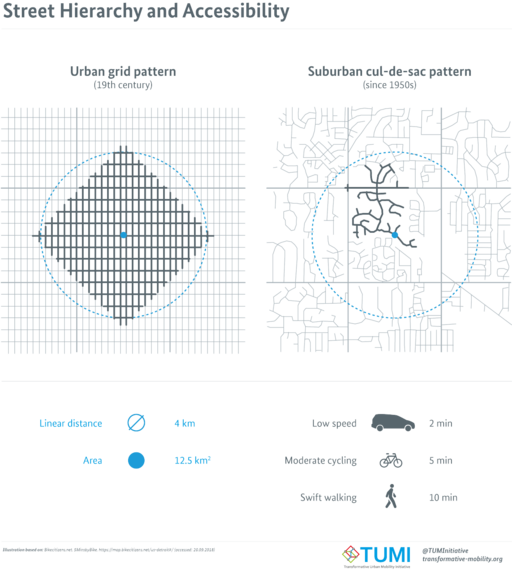
Traditional urban grid versus a hierarchical suburban road network. Infographic: Transformative Urban Mobility Initiative (TUMI), CC BY-SA 4.0, via Wikimedia Commons
There is an alternative to the hierarchical network: the gridded street networks that have been in use for thousands of years in cities around the world. As opposed to the hierarchical model, in which drivers’ options for getting from Point A to Point B are limited and prescribed in advance by the design of the system, the street grid offers many choices for how to get from place to place. As Marohn explains, “A gridded street system will provide a driver more options for responding to congestion than a hierarchical network where all drivers are funneled to the same location.” (Street grids also tend to allow for more places to be accessed on foot.)
This is a conclusion so common sense as to seem obvious. Yet, as Marohn writes, “The sad reality is that most transportation professionals consider the hierarchical road network to be somehow efficient or optimal, even though, in terms of utilizing the resources mobilized for transportation, it is obviously ridiculously inefficient and wildly suboptimal.”
Transportation agencies’ response to the “flooding” that takes place on highways each morning and evening is often to dredge a deeper channel – that is, add more lanes. This does not work, for the simple reason that traffic is not a random act of nature like a rainstorm, but rather is generated by millions of individual human beings dynamically adapting to their surroundings. As Marohn explains, “Dynamic humans will adapt to the additional capacity [provided by a road expansion], generally by making decisions that require them to take more auto trips.” This is what transportation experts call “induced demand,” and it often causes congestion to reappear on expanded highways sooner rather than later.
Street grids can disperse the flow of traffic along a greater variety of paths. An even better solution, though, is to reduce the severity of the “rainstorms” by reducing the number of auto trips in the first place. If people can dynamically adapt their behavior to additions in highway capacity, they can also adapt to changes in communities and the transportation system that make car trips less necessary and less desirable. Creating “15-minute cities” where most daily needs can be satisfied within a short distance of one’s home on foot or by bike or transit, making walking and biking safer and more comfortable, and shifting our financial approach from subsidizing driving to incentivizing less resource-intensive modes of travel can help prevent “traffic floods” at the source, much as green stormwater infrastructure like bioswales and permeable pavement can help prevent literal floods after rainstorms.
One of these things is just like the others
Here, though, is the insight that took my breath away: Transportation and stormwater are not the only systems in our society that behave like this. Over the course of the 20th century, the same kind of thinking that enshrined the hierarchical road system as a model also dictated the shape of other institutions and forms of infrastructure in ways that have caused similar problems.
Take, for example, one system that I know fairly well: energy. Until very recently, the electric grid resembled the hierarchical road system, only in reverse. Electricity was produced by a few large power plants, and then distributed along transmission lines and down through ever-smaller distribution lines to homes and businesses. Most of the time that system worked fine. But the transmission of power across long distances is as subject to “congestion” as any rush-hour expressway, for similar reasons. And the reliance on large power plants and transmission lines creates the risk that the entire system could be brought down by the failure of a single key node or link of the system which then causes a cascade of further failures in the rest of the grid.
Back in 2003, after such a set of cascading failures led to 50 million people in the northeastern U.S. and Canada losing power for as long as two days in the largest blackout in decades, I wrote that there was an alternative to the current system:
A new kind of electric system is possible – one that is decentralized, resilient and focused on the efficient delivery of services such as light and cooling, rather than moving the maximum number of electrons from place to place. Such a system would take advantage of the nation’s abundant supply of renewable energy sources, reduce the strain on the electric grid through conservation and efficiency, and encourage the development of flexible and reliable small-scale distributed generation systems.
Today, that more-resilient electricity system is beginning to take shape, with local forms of distributed energy technologies such as solar power, energy storage, and microgrids combining to allow neighbors to share energy locally first, and rely on the larger transmission network only secondarily.
These distributed systems have many advantages. They are less reliant on long-distance power transmission, which is costly and time-consuming to build and results in significant energy losses when in use. Localized systems are also more resilient to system-wide failures and less likely to contribute to them, helping to ensure stable access to power in an increasingly unpredictable climate.
These distributed power systems also give individuals and communities a chance to participate meaningfully in meeting their own energy needs – to use the adaptability and creativity of individuals and communities for the collective good.
15-minute cities, solar microgrids, vibrant local economies, community gardens and other distributed frameworks create opportunities to identify and manage potential problems from the ground-up – preventing or minimizing the scale of societal crises.
This is not to say that national or global networks are unnecessary or undesirable. Strategically expanding power transmission networks can help to bring even more renewable energy online. Unlike highway expansion, which creates more of something that’s bad for society (fossil fuel-powered car travel) and crowds out better options, transmission expansion can help enable the creation of more clean energy and (with the right market signals and policies) crowd out the use of dirtier forms of energy – especially in our vehicles and buildings. Few of us would want to live in a world with no roads between cities, or no national/global network of food production and distribution. Big networks have their benefits.
Yet, the engineering discipline – and policy arenas heavily influenced by high modernist ways of thought – tend to look down upon distributed, “soft path” solutions to societal problems.
Why is this? I don’t know for sure. Perhaps it’s the assumption that the scale of each action taken to address societal problems always must meet the scale of the problems themselves – that a single, big action by a government agency is worth more than small actions taken by tens of millions of individuals. Maybe it’s a concern – again, not an illegitimate one – that it will take too long for individuals or communities to adapt to change or adopt new technologies or practices (even though large-scale infrastructure projects can take years to plan, finance, permit and execute). Or that solutions that don’t involve concrete, steel and industrial-scale technologies aren’t “serious.” Or that “soft path” solutions require changes outside of the narrow purview of specialized technical experts and, therefore, that experts misunderstand them. Or it might be a symptom of a negative view of human nature or general distrust of democracy. Or some combination of the above.
But it is clear that, across multiple issues and areas of endeavor – from solar panels and batteries, to personal computers and the internet, to shared mobility and “tactical urbanism” – the potential for meaningful, distributed change has never been greater, providing a viable alternative path to 20th century “top-down” solutions that prioritized economies of scale, centralization and standardization.
As Marohn writes with regard to traffic, “The more dynamism that is allowed in a system, and the more options that are provided to people, the more responsive and adaptable a system will be.” In a world that is acting in ways that are increasingly beyond our capacity to predict, building systems that are designed from the start to be flexible, adaptable and reliant on people empowered to be part of the solution – rather than rigid, brittle and assigned to technical experts disconnected from the public and operating under their own set of values – can be an effective strategy to build up not only strong towns, but sustainable ones as well.
Topics
Authors
Tony Dutzik
Associate Director and Senior Policy Analyst, Frontier Group
Tony Dutzik is associate director and senior policy analyst with Frontier Group. His research and ideas on climate, energy and transportation policy have helped shape public policy debates across the U.S., and have earned coverage in media outlets from the New York Times to National Public Radio. A former journalist, Tony lives and works in Boston.
Find Out More
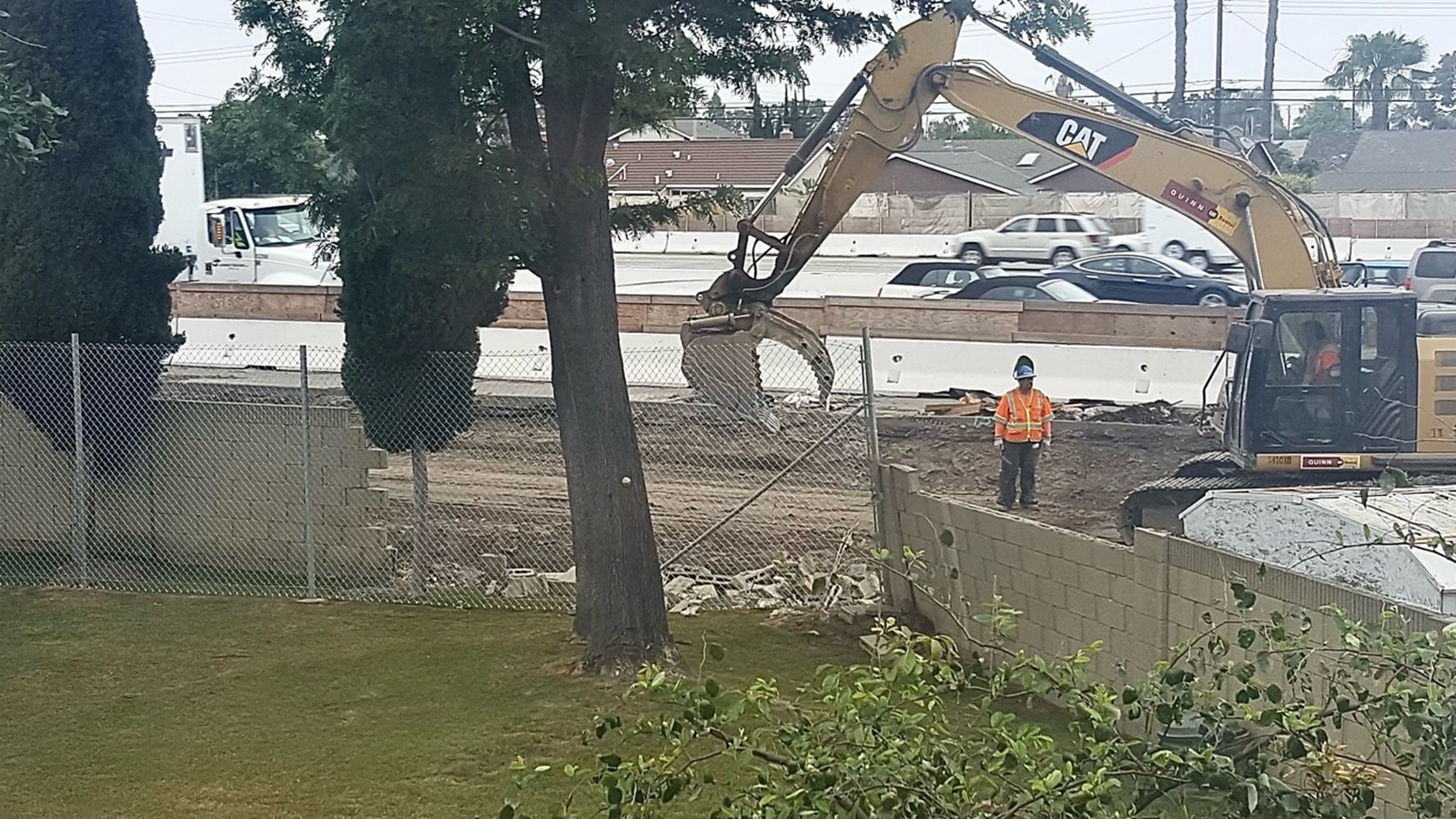
Wider highways don’t solve congestion. So why are we still knocking down homes to build them?
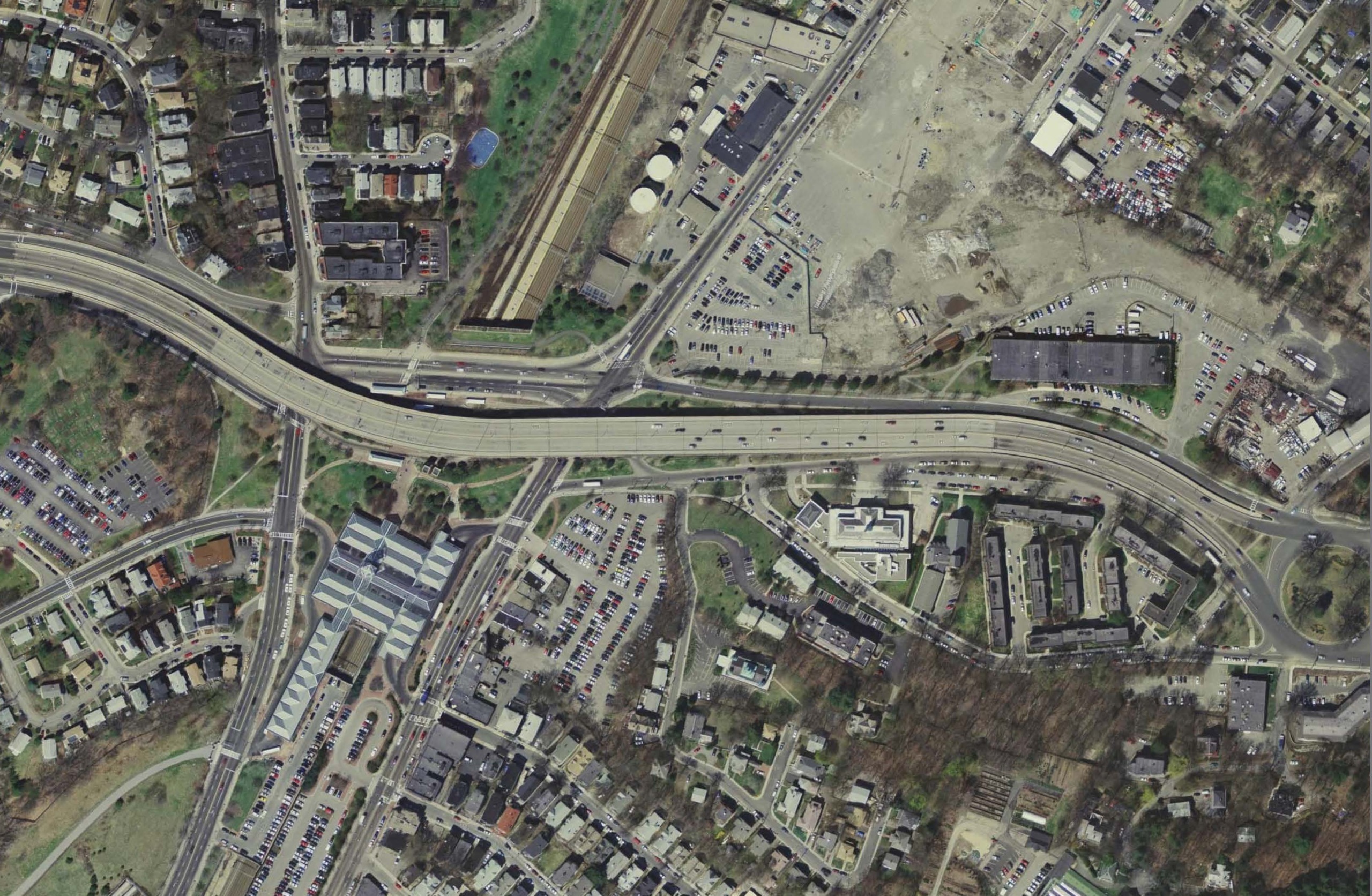
Four ways to look at a project (or policy, or almost anything)
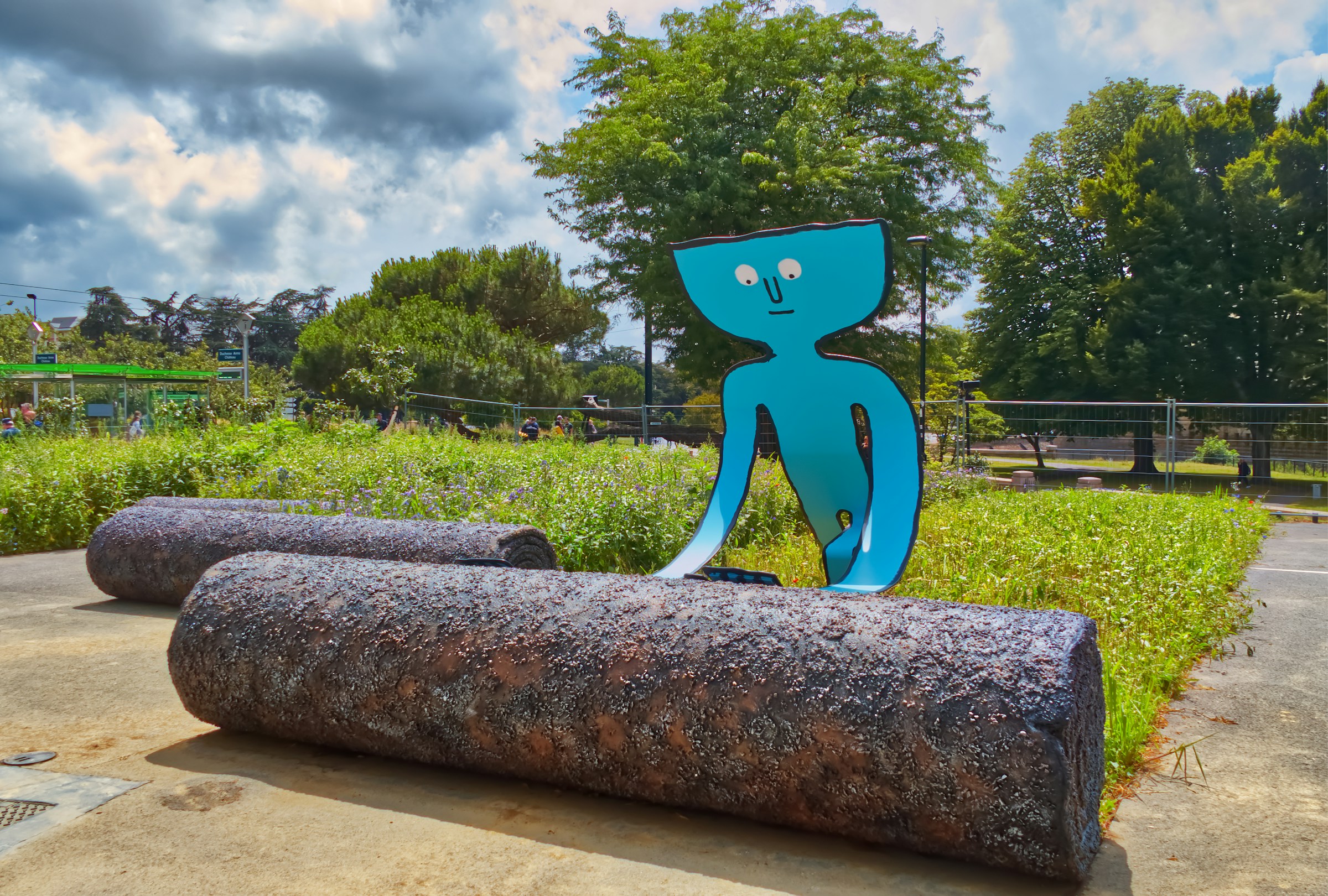
From gray to green: How (and why) to depave
